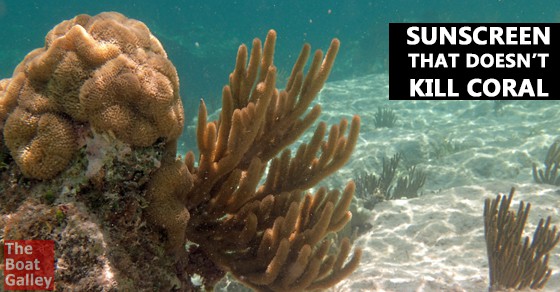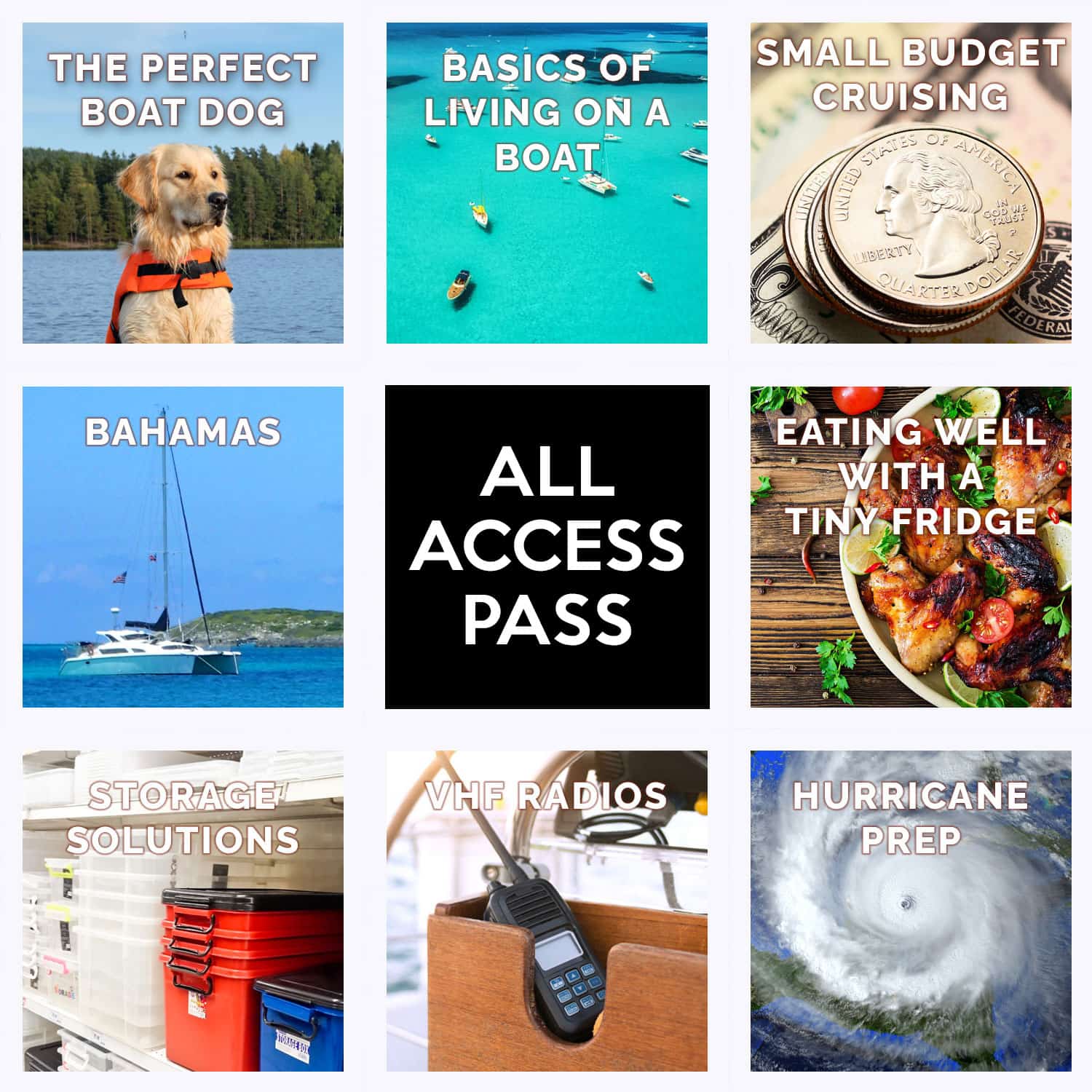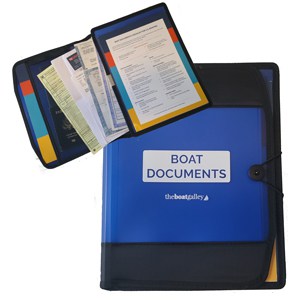In the past few months, it’s been widely publicized that ingredients in conventional sunscreens kill coral. These studies started appearing a few years ago; even a few drops of sunscreen can kill a relatively large area it seems. And a couple of studies have shown that oxybenzone, a chemical that’s in most sunscreens and harmful to reefs, also feminizes some fish.
YIKES! As boaters, we’ve been taught for years to wear sunscreen to avoid skin cancer. But as an avid snorkeler and diver, I don’t want to do anything that even might damage the reefs or fish population. Admittedly, there are other contributing factors to coral damage, but this is something that’s easy for me to avoid. (NOTE: if you use any makeup or moisturizer “with sunscreen,” make sure it doesn’t have any of the bad chemicals listed below!)
Our solution has two parts: cover up when snorkeling and use reef-friendly sunscreen for the parts we can’t cover. Actually, we use reef-friendly sunscreen anytime we use sunscreen, not just when snorkeling, since like most boats, ours drains grey water (that is, the sink and shower drains where we wash up) straight into the ocean.
COVER UP
Dave and I really don’t like to put a lot of “goop” on our skin and also don’t want to put any more chemicals into the water than we have to – even ones that are currently believed to be “reef-friendly.” So our first line of defense against the sun is a snorkel suit (aka dive Lycra). We’ve worn one ever since other cruisers recommended it to us back in 2003, our first year of cruising.
And a Lycra suit doesn’t only provide sun protection – it also protects you against jellyfish, which seem to congregate in many of the best snorkeling spots. I’m not going to claim that a Lycra will protect you from a really nasty sting, such as a Portuguese Man-of-War. But it’s great against many of the smaller ones, such as the “aguamales” that were prevalent in the Sea of Cortez.
A Lycra suit is not figure-flattering at all, I’ll admit. The good news is that you don’t have to buy one that’s skin tight. In fact, it’ll last a lot longer if it’s slightly loose and not pulling tight.
A few other notes about what we look for:
- Dave and I prefer a one-piece suit to a rash guard – even if we combine it with pants. With two pieces, they can separate at the waist as you swim, resulting in a sunburn or jellyfish stings on the uncovered area. And just a rash guard leaves the back of our thighs exposed to sunburn . . . and jellyfish.
- Neither a super-tight neck (we feel like we’re strangling) or a low V or scoop, where jellies can end up inside your suit.
- Some bit of bright color so it’s easier to keep track of each other while snorkeling. You know, that buddy system thing.
- Long enough zipper to make it easy to put on and take off – but not so long that it goes into the crotch (had that in one suit – very uncomfortable).
- Foot stirrups are nice to keep the legs pulled down while you swim. If a suit doesn’t have them, you can sew a piece of elastic to the leg bottoms in a “U” to make a stirrup.
- Lighter weight fabrics stretch more and dry faster, but can let a little more sun through. We opt for a mid-weight – basically anything not advertised as very thin or heavyweight.
- Some people prefer lighter colors as being cooler out of the water. Since we take ours off immediately after exiting the water – or at least pull the sleeves off and tie them around our waist – this isn’t a big deal to us.
NOTE: Sizing on dive Lycras isn’t the same as on other clothing. You’ll probably take at least one, sometimes two, sizes larger than in regular clothing. When in doubt, go for the larger size; it’s better to be a little loose than super tight. If ordering online, check the size charts and take your own measurements – don’t just go on “I think my measurements are . . .” If your measurements, weight and height put you in more than one size range or you’re right on a borderline, I’d opt for the larger size – a suit that’s a little looser won’t hurt you but one that’s too tight will be uncomfortable and have a tendency to rip.
We both like the fit and features of the Neosport dive skins with the bright yellow trim. As I’m writing this LeisurePro is selling them for $27 (over 40% off) – don’t know how long the sale will last (with 60 days to return for full credit if it doesn’t fit and 120 days to return for store credit).
- Neosport Dive Lycra at LeisurePro (the smaller sizes will fit many upper elementary kids, too)
They are also available from Amazon – click here to see.
For smaller-sized kids, there are several good options on Amazon (friends with kids/grandkids have told me they look for the same things in kids’ Lycras and particularly like the sun protection offered by one-piece suits although they’re a little tougher to remove for bathroom breaks):
- Cokar One-Piece Neoprene Suits
JDS Snorkel Suit(No longer available on Amazon. The Realon Kids Wetsuit is highly rated.)
REEF-FRIENDLY SUNSCREEN
When I first heard about the sunscreen problem (prior to a trip we made to Hawaii in 2013), I started researching alternatives. A number of companies have come out with “reef-friendly” sunscreen but, like everything else, they’re not all created equal.
First point: use of the term “reef safe” is unregulated. Check the list of ingredients yourself to make sure it doesn’t contain oxybenzone, butylparaben, octinoxate or 4-methylbenzylidene camphor.
Five other differences between brands:
- Some stay on in water – or with sweat – much better than others. Waterproof isn’t just better for your sun protection – it also means that whatever it’s made of isn’t going into the water right over the reefs. And sweatproof is critical for me to not get sunscreen in my eyes!
- Some brands provide much better sun protection than others.
- Some are much easier to apply than others.
- Some are almost impossible to wash off at the end of the day.
- Some are very greasy feeling and/or rub off easily if you rub up against something.
The one place where they are pretty much “equal” is in price: reef friendly sunscreens are much more expensive than what you’ve probably been using – especially if you’re like me and always bought the huge bottles of No-Ad. I’m willing to pay the difference, but yes, it’s an additional reason that I wear a dive skin: I don’t have to use nearly as much sunscreen when I snorkel. It saves some money (my sale-priced dive skin cost only a little more than one tube of reef-friendly sunscreen).
Dave and I are now using Rubber Ducky sunscreen as it does a great job on all the counts above. I checked ingredients on many other brands and read reviews. I tried a few free samples that I got at the boat show, but this is the only one that I bought a whole tube of. We’ve been really happy with it although it’d be nice if it were less expensive.
We use the SPF 30 version – it’s white but rubs in well so that it’s not noticeable even on well-tanned skin; I don’t know if it would show on darker-skinned people. Rubber Ducky also has an SPF 50 version with a tint as the higher SPF just doesn’t rub in as well and it would look white on your skin were it not tinted (we have not tried this one, friends like it but say the tint can rub off a bit on clothing).
Rubber Ducky stays on in the water even better than conventional sunscreens, yet washes off fairly easily at the end of the day with just soap and water on a washcloth – a washcloth is necessary to have a bit of texture to “scrub” (I love the Scrubr washcloths – see on Amazon). It’s easy to apply, being very slightly greasy but better than any of the other reef-friendly sunscreens I tried, and it doesn’t tend to rub off as long as I rubbed it in well.
Best of all, it doesn’t have any weird chemicals. Zinc oxide is the active ingredient. Both the SPF 30 and 50 varieties are listed as hypoallergenic and safe for kids.
For snorkeling, I use the sunscreen on the back of my neck and ears only – I prefer not to use it on my face as my mask seals best against bare skin. I do use it on my face, arms and legs when we’re outside on sunny days however.
How long a tube will last you depends totally on how often you use it and how much of your body you use sunscreen on versus covering up (Dave and I tend to wear shirts and hats as our primary sun protection).
- Rubber Ducky SPF 30 untinted reef-friendly sunscreen (Update: Rubber Ducky appears to only offer 50 SPF squeeze tubes on Amazon now.)
- Rubber Ducky SPF 50 untinted reef friendly sunscreen in pump bottle
UPDATE: We’ve recently used some of the Thinksport sunscreen as it’s a little cheaper, has no nasty chemicals and seems to protect us just as well.

Carolyn Shearlock has lived aboard full-time for 17 years, splitting her time between a Tayana 37 monohull and a Gemini 105 catamaran. She’s cruised over 14,000 miles, from Pacific Mexico and Central America to Florida and the Bahamas, gaining firsthand experience with the joys and challenges of life on the water.
Through The Boat Galley, Carolyn has helped thousands of people explore, prepare for, and enjoy life afloat. She shares her expertise as an instructor at Cruisers University, in leading boating publications, and through her bestselling book, The Boat Galley Cookbook. She is passionate about helping others embark on their liveaboard journey—making life on the water simpler, safer, and more enjoyable.
Here’s your “Quick Start” to everything you need to know when living on a boat:











Joni Goodman says
It is great to have choices. Check out the ingredients in Thinksport sunscreen sold by REI and Amazon.
The Boat Galley says
Thanks. Here’s the link to it on Amazon, but don’t know how waterproof it is: http://amzn.to/1UbzJcv
Cindy Seda says
I sell and use Ava Anderson 30 SPF, UVA/UVB, water resistant, no harmful chemicals, and the zinc oxide is non nano particle…which is important for your health. And it’s much more affordable, a 2.9 oz tube is $15.95. I also use all their other products, because on a boat, most everything ends up in the water !! They have nontoxic cleaners, dish soaps, leather cleaner, body wash and cosmetics. All Are great for boat life, they are the only products I use on our boat. In box me if you are interested in any of our non toxic products
Laura K Redding says
my business is custom shirts for sailors,many of my customers use them for snorkling because they are UPF 50 rated. You still have to have proper sunscreen for head, neck and legs but these cover the whole torso and arms…and they are fun!!! I use Vapor Solar and Hanes Cool Dri are also 50 UPF, they are dryfast shirts. Here is a link to my page where you can see examples. https://www.facebook.com/CustomSailingShirtscom-112040245530182/?ref=hl
Ingrid Stow says
Arbonne has Eco friendly sunscreen called Liquid Sunshine. If anyone needs it you can get some through my site http://www.ingridstow.arbonne.com Happy Boating!!
Evan says
UV resistant clothing and a hat would allow you to limit the use of lotion to your face and (likely) legs. Companies like the Aussie-based Coolibar offer SFP 50 clothing that is attractive and fashionable. Just saying, there are alternatives out there. In Oz, the UV is a bit more intense, and they have developed products that are safe to the body, environmentally friendly and sustainable. Life is not better through chemistry.
Meri says
I’ve worn jellyfish suits for the past 8 years full-time cruising. I prefer the 2-piece get-ups myself. I had mine tailor made in La Paz, Mexico and the seamstress added a triangular piece that covers the hand. An elastic loop fits over my middle finger so it doesn’t ride up. Thanks for the sunscreen info – does Rubber Ducky sting your eyes? I have vitiligo and wear sunscreen all the time. In the sweaty tropics it can be a nuisance.
Carolyn Shearlock says
I’ll bet you got your suit from Katty! Rubber Ducky hasn’t bothered my eyes at all — even in the heat here it hasn’t sweated down into them.
S V Bella Nave says
Good topic! Researched sunscreens for Master’s in Nursing and personal topic as a sun worshipper, SCUBA diver. In the end, the safer for reef is larger particles such as Zinc particles. Nano-chemicals are more aesthetic however their ability to absorb into the bloodstream. Anything over SPF 30 is most likely hype (44) and questionable in effectiveness. Optimal is using less sunscreen by using more UV rated clothing or skins. Any lotions can breakdown in water, as well as hair products, and most recently the discussion on the microbeads often found in body washes.
Kate says
I’m not a fan of sun lotions, either . . . most have usually have fallen into the “gunk/goop/gross” or “oil slick/basting lotion” categories, or just plain don’t work well enough or long enough between applications. But being really fair-skinned, sailing without sun protection is a definite no-no. I proved that point to myself as a kid when I went for a “quick” sail on a lake I didn’t know and lost the wind. Sun poisoning is far worse than being slimy.
Now years later and with a little more sense (at least I hope so!), I’ve discovered Solumbra sun protective clothing. It’s made of a soft fabric that’s tested at SPF 100 and is actually rated as a medical device. Recommended by dermatologists, too. It’s comfortable and launders well without losing its oomph. The clothes are designed for active wear, though you may want a scarf or strap with the hats. Price is villanous (you won’t want to wear it for scuzzy jobs), but it’s also expensive being treated for problems due to sun exposure, which we all know is cumulative exposure.
I still need to use sun stuff, but Solumbra makes it much more bearable since I can use far less lotion and still be protected well. https://www.sunprecautions.com
Joanne Hebel Marquez says
Hi Carolyn,
Love your blog!
Have you heard of http://stream2sea.com/products?
I have not tried them, but the reviews of the products sound promising.
Thanks,
Joanne
Carolyn Shearlock says
Haven’t heard of them before, but when we get back from the Bahamas I think I’m going to try some of their products!
Roger says
Just ordered two Neosport suits. No free shipping. FYI.
Carolyn Shearlock says
Thanks for the update — I never know when such things will end.
Leah Fisck says
I’ve used “Smart girls who surf” products with great success. Besides being very fair skinned, I also have very sensitive skin. Even some of the sunscreens labeled as hypoallergenic make me break out in a rash. In addition to sunscreen, they have many other products too. My first purchase was a sample pack and I liked all the products.
Bridgette Pilon says
Nice! I wanted to look into sunscreens like that. Also they give tips on wetsuits!
Julia Pilon says
Yes I thought you should see both!
Jessica Heinicke says
Just bought two Lycra suits! What a great deal! Thanks, Carolyn!
Kristy Dunning says
Never tried the Rubber Ducky brand, but will. I think the only one we found that worked ok was Alba Botanicals. We tried Badger Sport but it wouldn’t rub in for anything, lol.
Tami says
I’ve been using my own zinc oxide mix. It’s just the ZnO and… coconut oil. Mix to a paste, slather on. I look like the Tin Man. But. it. Works. In fact it’s rather difficult to get off, but it sure lasts thru sweat and wet.
Anonymous says
Sandi Shuttleworth
Anonymous says
Just a thought… if it’s killing coral what’s it doing to humans?
The Boat Galley says
Yes, that’s another whole question . . . and why I prefer to just cover up as much as possible.
Anonymous says
The Boat Galley me too.
Anonymous says
Thanks for sharing. I’ve never understood why this issue isn’t more widely known in the US, especially in the FL Keys.
The Boat Galley says
Doing my best to spread the word!
Anonymous says
Did not know this!
Anonymous says
Jessica Furuglyas
Janine says
Couple of great marine-friendly sunscreen’s from Australia – MooGoo and We Are Feel Good Inc. Both products are eco-friendly, made with organic and natural ingredients and preservative free. They are skin kind too. Oh and both are built for the harsh Australian sun so 50+. About the best you are going to get. I travel the world and sail all over and every time I return to Oz to see family….I stock up.